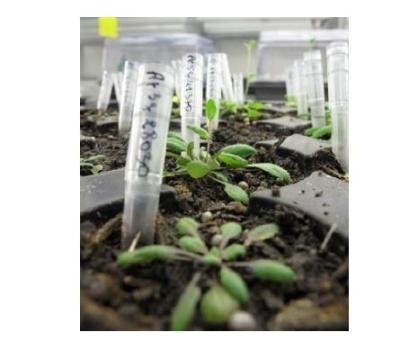This may be a surprising idea but it is far from unrealistic, according to Associate Professor Sureshkumar Balasubramanian of the School of Biological Sciences at Monash University.
Associate Professor Balasubramanian has been investigating how plants respond to temperature change, a major project supported by a prestigious Future Fellowship from the Australian Research Council.
With rising temperatures associated with global warming threatening global food supplies, Associate Professor Balasubramanian has been identifying plant varieties that stand up to hot weather.
He analyses the genetic make-up of plants whose seed set or flowering time is not affected by heat, to determine precisely why they thrive while others do not.
Even a small plant may have at least 25,000 genes.
"Technology now allows us to look at the impact of temperature rise on all these genes rather than testing one at a time, so you can see how the organism as a whole responds to change," Associate Professor Balasubramanian said.
"It’s learning from nature for our own benefit."
Such knowledge has great potential for improving farming practices as conditions change. But during Associate Professor Balasubramanian’s experiments with temperature, something with perhaps even more potential became apparent.
When one set of plants started dying, investigations showed a genetic mutation was to blame.
"It turned out that this type of genetic mutation causes up to 40 genetic diseases in humans," he said.
"A very similar mutation underlines many genetic neural diseases like Friedreich’s ataxia [an inherited disease that causes progressive damage to the nervous system]."
Genetic defects in plants or animals set up a chain of causal effects, and the pathologies that eventually result have nothing in common.
"Typically research is on how you can address that later pathology," Associate Professor Balasubramanian said.
"Our assumption is the first stage should be very similar in plants and in humans. What we are asking is – what if you try to attack the first step?"
Through a project funded by the National Health and Medical Research Council, his lab is now experimenting with plants as models, as they investigate fundamental biological questions about how mutations arise, disperse and lead to disease.
If plants could be used in this way, the many possible benefits include being able to study change over many generations in a short time, and to test different drugs on plants rather than human or animal tissue.
It is still early days, said Associate Professor Balasubramanian, acknowledging the risk involved in such an innovative approach.
"We don’t know where this is all taking us," he said.
"But we see a lot of opportunities in it."

